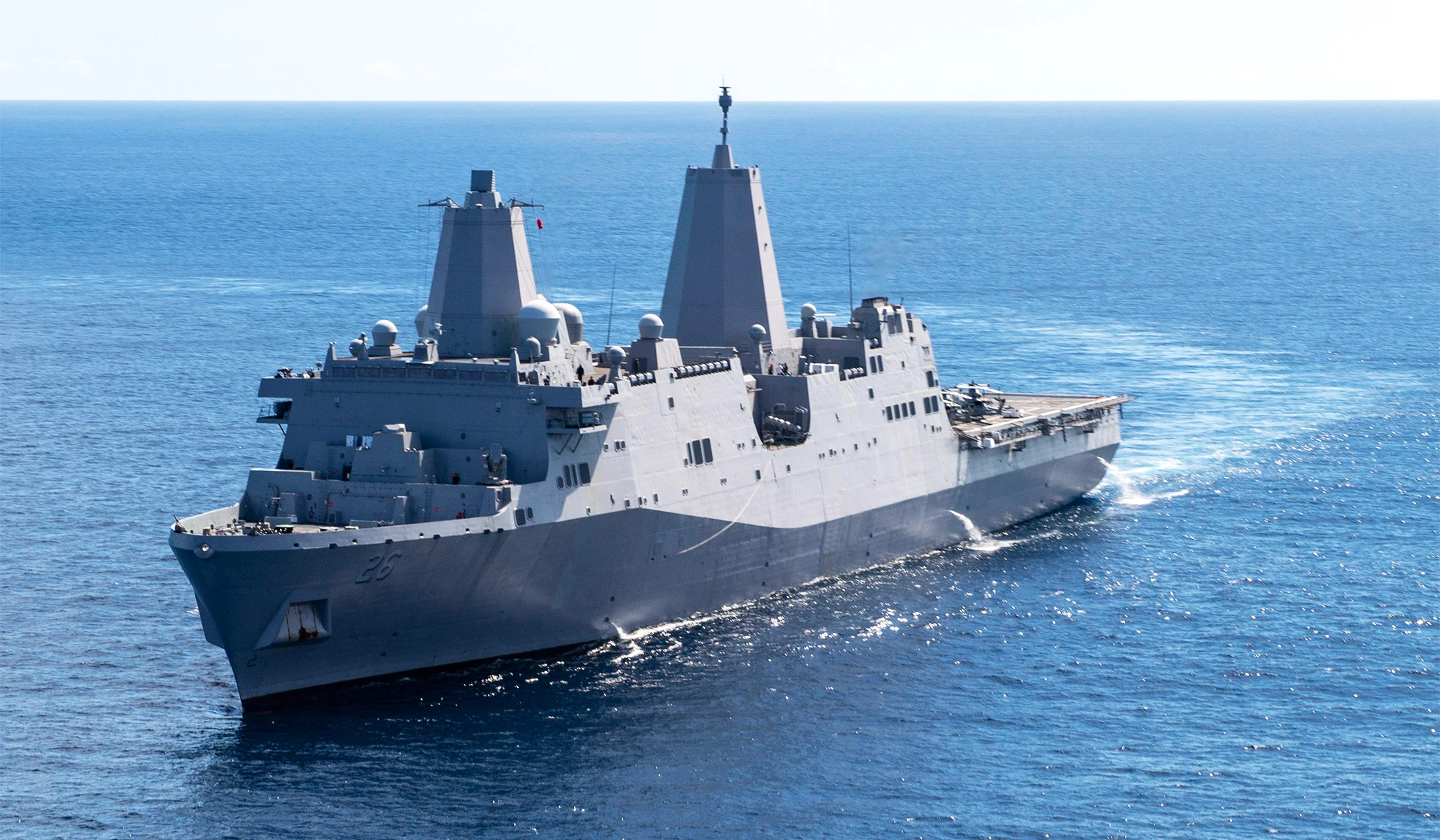As Congress considers the FY2024 National Defense Authorization Act (NDAA), the future of the Navy’s amphibious force and the San Antonio-class Landing Platform Dock (LPD) ships in particular is under debate. While some argue that the LPDs should be cut down in terms of complexity and size due to increasing costs, others suggest stretching out the time and money allocated to build them to diminish their impact on the shipbuilding budget. However, the authors of this article disagree with both approaches and argue that LPD construction needs to end altogether.
One reason for this is that the United States Marine Corps has been locked into an amphibious-assault strategy for too long and needs to move on to remain relevant as an institution and operational military force. The Marine Corps has not performed an amphibious assault against an opposed beach since the landing at Inchon 73 years ago, and modern technology makes it doubtful that the Corps will ever do so again. Aspiring adversaries have invested in anti-access/area denial weapons to hold our Navy and Marine Corps forces far from their shores with advanced sensors and long-range missiles.
Given that LPDs unload their smaller amphibious-assault vehicles within visual range or just over the visible horizon of the beach, both the larger ships and the smaller vehicles are detectable by radar and infra-red sensors. They would be under continuous traditional gunfire and continuous long-range missile barrages for hours or even days before coming within range of the beach. Future opposed amphibious assaults will meet with disaster due to the state of modern anti-access sensors and weapons.
In war-gaming conflicts with priority adversaries China and Russia, the Marine Corps remains a critical player, but a large-scale amphibious assault is not a critical capability. In the conflict with China scenario, large-deck amphibs such as LPDs are liabilities that require multiple escorts that will need to be pulled from other more important missions, and they play marginal roles once hostilities begin. However, Marine Corps units equipped with new anti-ship and land-attack missiles surged to relevant geographic positions are critical game-changing assets, but they must be delivered ahead of combat operations in a more permissive environment.
The authors argue that if just half of the money allocated for the San Antonio-class LPDs was reallocated toward alternative designs better suited to the missions the Marine Corps is more likely to be called upon to perform, the other half could be shifted to other Navy shipbuilding programs such as submarines, destroyers, and unmanned vessels that need additional support and represent proven requirements in high-end fights.
General David Berger has tried to usher in a new paradigm for the Corps, which would distribute his Marines into smaller, lighter, more technologically advanced, and agile units that could operate independently in archipelagic waters and remote land bases to counter China’s significant investments in anti-access/area denial weapons. However, his reform efforts have been rejected by many influential retired three-star and four-star Marine generals whose experiences reach back to the Vietnam War or were shaped by combat with significantly less sophisticated adversaries in the Middle East over the past two decades.
The nation cannot allow the argument that “we have to keep building specific ship X in order to keep our workers” to be made. The threat of war with China is proximate and real, and the nation needs more ships, but they must be the right ships for the fight. The Navy should support the building of numerous new LAW/LSM platforms, but it must also be willing to bring the construction of older designs, such as the LPD, to an end to free up funds for new submarines and frigates.

